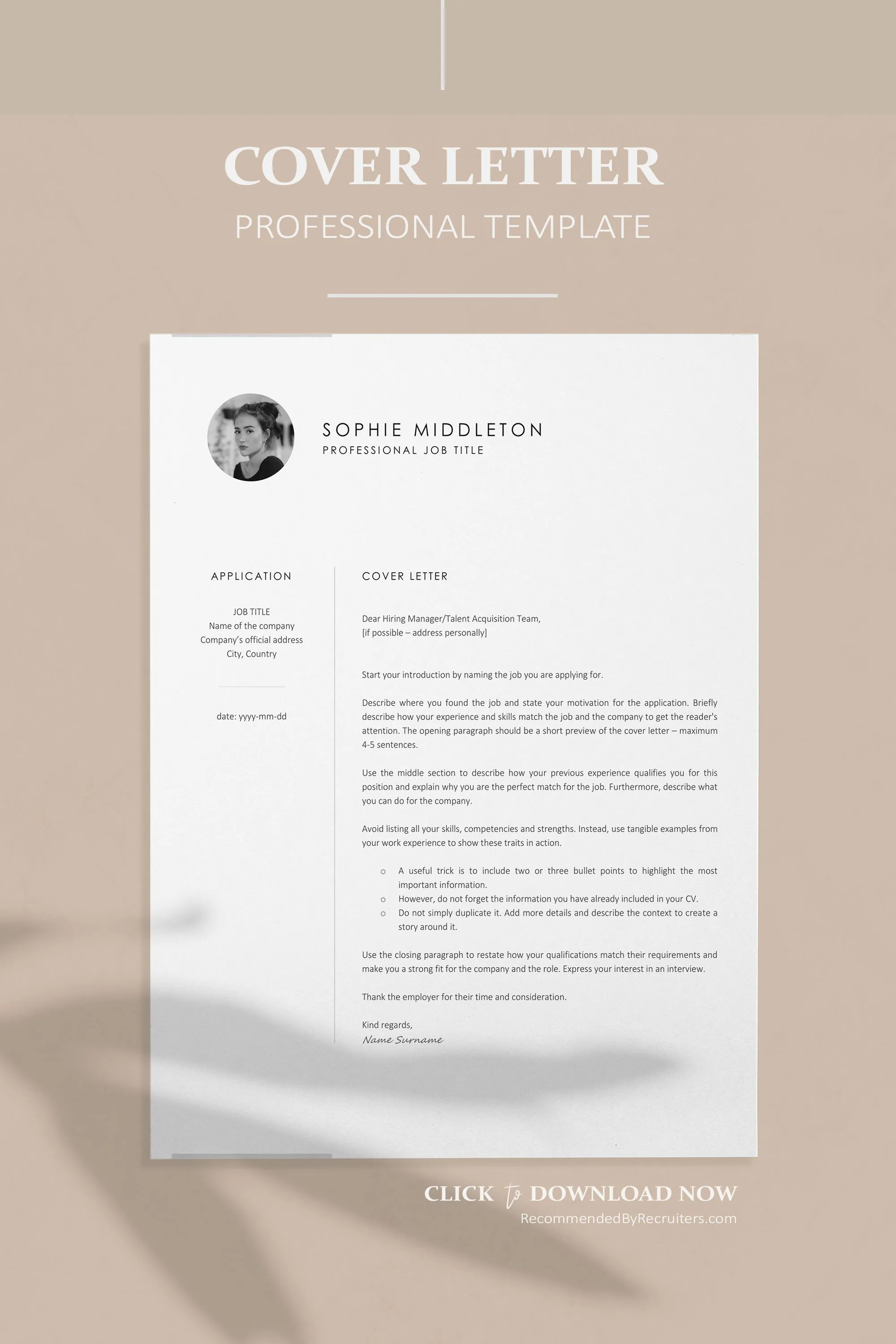Why a Standout Creative Cover Letter Matters
In the competitive landscape of creative jobs, a cover letter is your first opportunity to make a lasting impression. It’s not just a formality; it’s a chance to showcase your personality, passion, and unique skills. A well-crafted cover letter can set you apart from the crowd, highlighting why you’re the perfect fit for the role and the company. While your portfolio displays your creative work, your cover letter tells the story behind it. It provides context, explains your creative process, and demonstrates your communication skills, all of which are crucial in a creative field.
Understanding the Creative Job Market
The creative job market is dynamic and diverse, encompassing roles in graphic design, marketing, writing, web design, and more. Understanding the specific requirements and expectations of each industry is vital. Researching the companies and roles you’re applying for will give you insights into their culture, values, and what they are looking for in a candidate. Tailoring your cover letter to address these specific needs shows that you’ve done your homework and are genuinely interested in the opportunity.
Key Elements of a Winning Creative Cover Letter
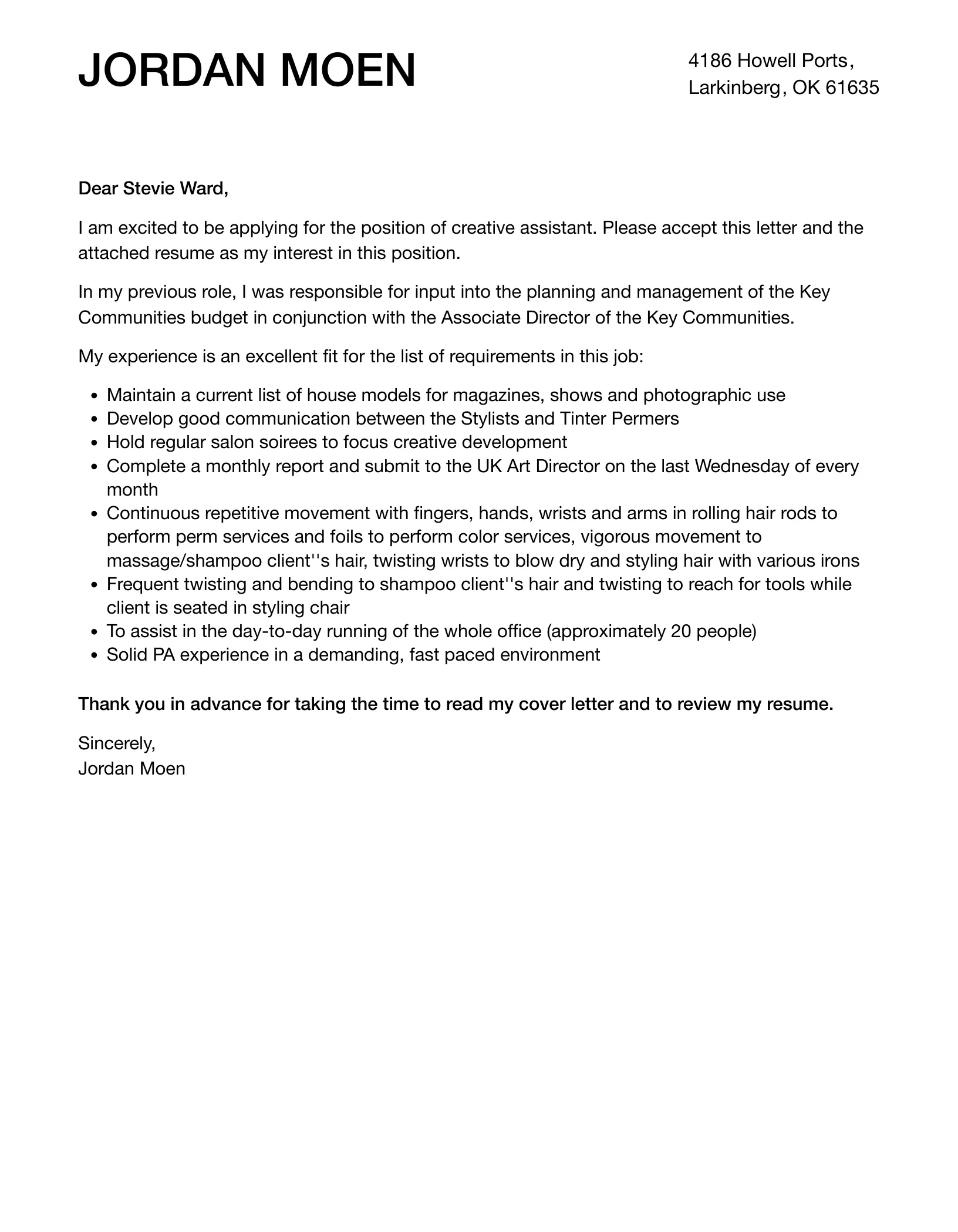
A winning creative cover letter goes beyond the basics. It should be a compelling narrative that captures the reader’s attention from the start. It must be clear, concise, and free of errors. It should demonstrate your enthusiasm for the role and the company. The key is to focus on the elements that make you, you. It is also important to highlight how your skills, experience, and creativity align with the job requirements and the company’s values.
Highlighting Your Unique Creative Skills
Your cover letter is your chance to shine a light on your skills. Go beyond listing your abilities; provide examples of how you have used them to achieve results. Whether it’s designing a successful marketing campaign, creating a visually stunning website, or writing captivating content, provide concrete examples. Use action verbs to describe your accomplishments and quantify your achievements whenever possible. For instance, instead of saying “Managed social media,” say “Increased social media engagement by 30% through targeted content strategies.”
Showcasing Your Portfolio Effectively
Your portfolio is a critical part of your application, but your cover letter should provide context. Briefly mention your portfolio, and direct the reader to your best and most relevant works. If the job requires a specific skillset, highlight the projects in your portfolio that showcase those skills. For example, if you are applying for a web design position, emphasize the web design projects in your portfolio and mention the technologies you used. This helps the hiring manager quickly understand your capabilities and expertise.
Demonstrating Passion and Enthusiasm
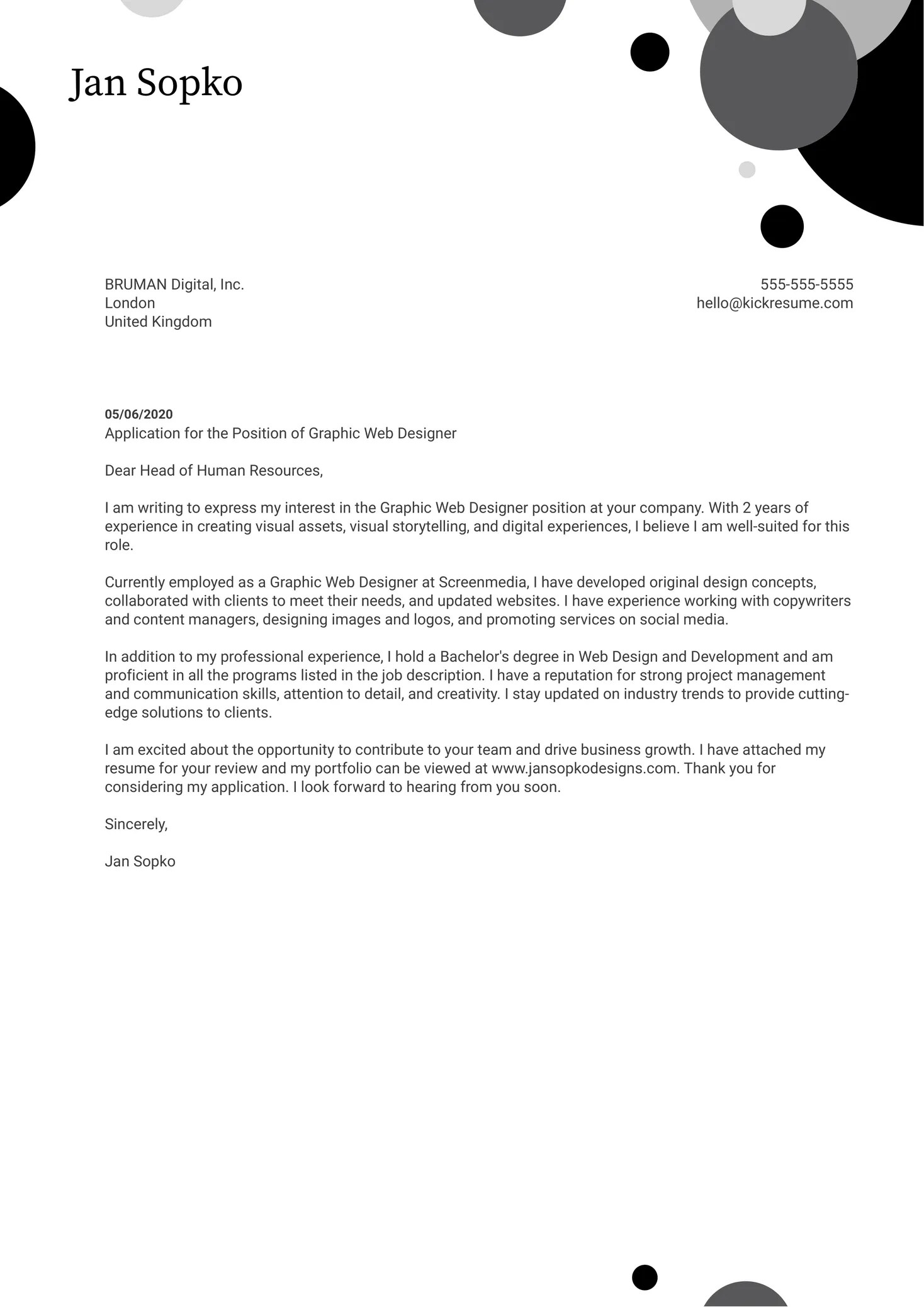
Show your genuine interest in the role and the company. Explain what excites you about the opportunity and why you are a good fit. Research the company’s mission, values, and recent projects to show you understand their work. Mention specific projects or initiatives that resonate with you and explain why. This demonstrates that you are not just looking for a job, but that you are eager to contribute and be a part of the team. Enthusiasm is infectious and can make a significant difference in the impression you create.
Structuring Your Creative Cover Letter
A well-structured cover letter is easy to read and helps the reader quickly grasp your key qualifications. It should follow a logical flow with a clear introduction, body paragraphs, and a concise conclusion. Each section should have a specific purpose, and the entire letter should tell a cohesive story about why you are the ideal candidate for the job. Proper structure helps to keep the reader engaged and ensures that you communicate your message effectively.
The Perfect Cover Letter Opening
The opening is your opportunity to grab the reader’s attention. Avoid generic greetings like “To Whom It May Concern.” Instead, address the hiring manager by name if possible. Start with a compelling sentence that immediately captures their interest. You could mention something specific about the company or the role that excites you, or you can share a brief anecdote that highlights your relevant skills. The goal is to make the reader want to read more, setting the tone for the rest of the letter.
Crafting Compelling Body Paragraphs
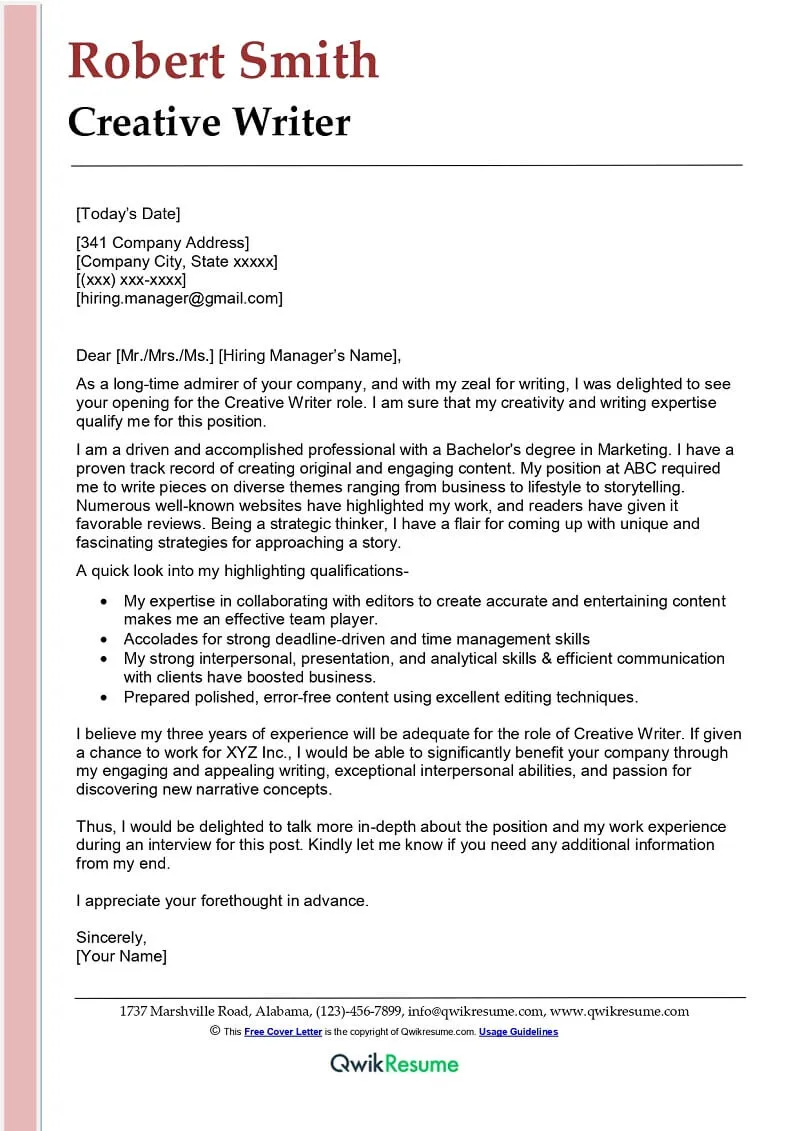
The body paragraphs should elaborate on your qualifications and experiences. Each paragraph should focus on a specific skill or accomplishment, providing details and examples to support your claims. Use the STAR method (Situation, Task, Action, Result) to structure your stories. This helps you provide context, explain the challenges you faced, and highlight the actions you took and the results you achieved. This structured approach makes your achievements more impactful and memorable. Also, tailor your body paragraphs to match the specific requirements of the job description.
Writing a Powerful Closing Statement
The closing statement should reiterate your interest in the role and express your enthusiasm to contribute to the company. Thank the hiring manager for their time and consideration. Include a call to action, such as expressing your availability for an interview or stating your eagerness to discuss your qualifications further. End on a positive note, leaving the reader with a strong impression of your suitability for the position. A well-crafted closing ensures that your cover letter finishes strong.
Formatting and Design for a Creative Cover Letter
In creative fields, the design of your cover letter matters. It’s a direct reflection of your aesthetic sense and attention to detail. The formatting should be clean, professional, and aligned with the company’s brand. A well-designed cover letter can enhance your overall impression and show your creativity even before they see your portfolio.
Using Visuals to Your Advantage
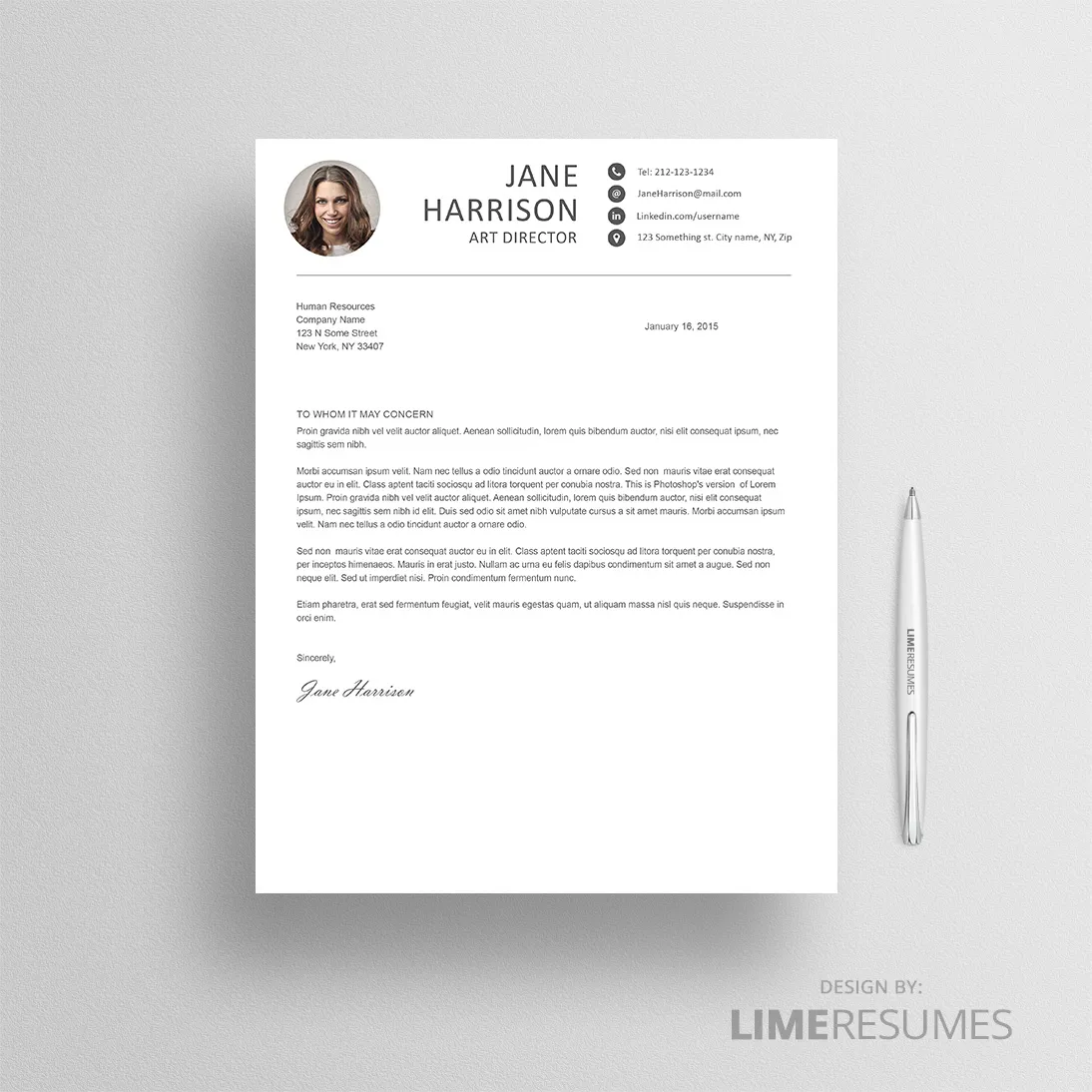
While the content of your cover letter is important, consider incorporating subtle visual elements. This can include a well-chosen header, a simple graphic element, or a visually appealing layout. Ensure any visuals enhance the readability and don’t distract from the content. For example, use a professional-looking headshot or include a link to your online portfolio with an attractive thumbnail image. Be sure that the visuals support the overall message.
Choosing the Right Font and Layout
Choose a professional and legible font, such as Arial, Calibri, or Helvetica. Avoid overly decorative or complex fonts that might distract the reader. Use a clean layout with ample white space to make your cover letter easy to read. Break up large blocks of text with clear headings and bullet points. Ensure that the layout aligns with the company’s brand or the general style of the creative industry you’re applying for. Consistency in formatting throughout the document is essential for a polished look. Use a professional cover letter template.
Avoiding Common Creative Cover Letter Mistakes
Even small errors can undermine your application. Paying attention to detail and avoiding common mistakes can significantly improve your chances of getting noticed. Always proofread your cover letter carefully to ensure that you make a strong impression on the hiring manager. These mistakes can make or break your chances of getting an interview.
Generic vs. Personalized Content
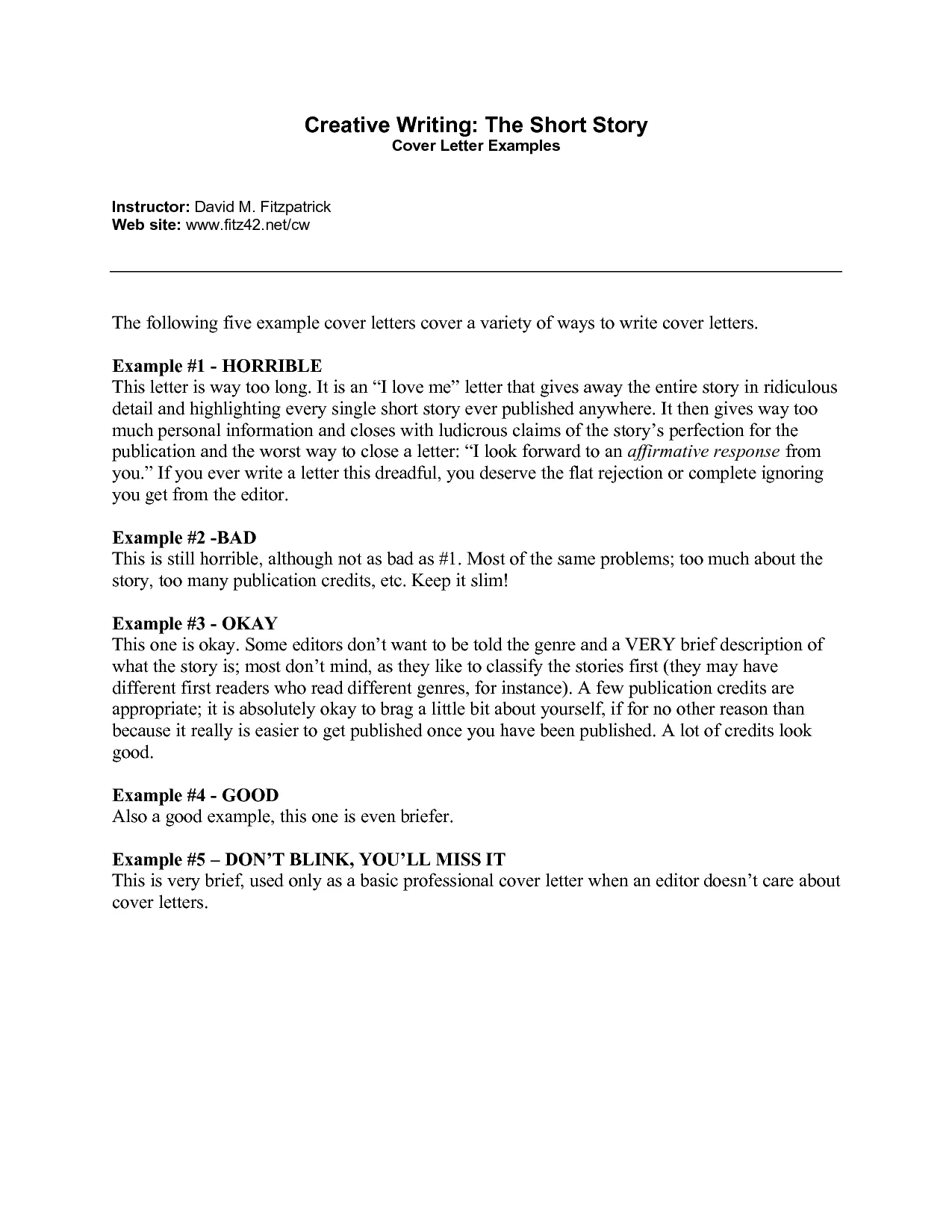
Avoid using a generic cover letter that you send to every employer. Tailor your letter to each specific job application, highlighting the skills and experiences most relevant to the role. Research the company and the specific job to show your genuine interest and understanding of their needs. Generic content suggests a lack of care and reduces your chances of standing out. Make sure to use the hiring manager’s name. This is an important factor to show how much you value the company.
Typos, Grammatical Errors, and Poor Design
Typos and grammatical errors are a sign of carelessness and can instantly disqualify you. Proofread your cover letter multiple times and have a friend or family member review it. Ensure that the design is clean and professional, with no formatting inconsistencies or visual clutter. Pay attention to the layout, font choices, and overall visual appeal. A poorly designed cover letter suggests a lack of attention to detail, which is crucial in creative jobs. Make sure that you show your skills and value.
Tailoring Your Creative Cover Letter to Specific Jobs
Customizing your cover letter for each job application significantly increases your chances of success. It shows the hiring manager that you care enough to put in the extra effort. The more specific your cover letter is to the job requirements, the more likely you are to get noticed. Use keywords from the job description and address the company’s specific needs and challenges. This customization demonstrates that you are a perfect fit for the role.
Researching the Company and Role
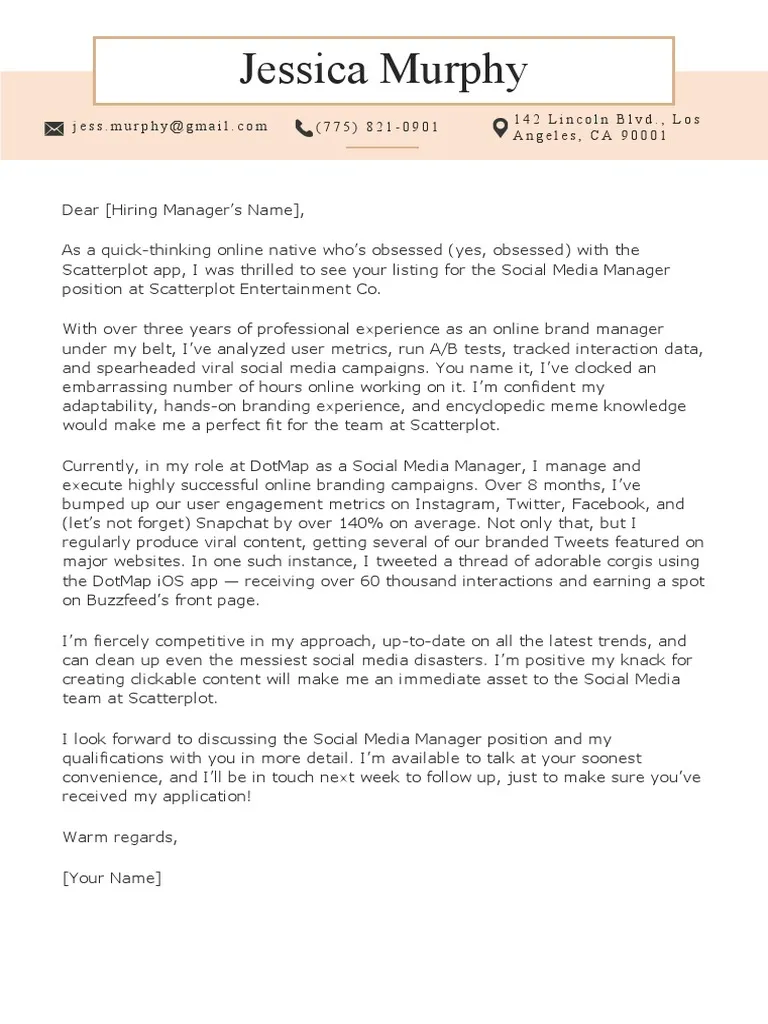
Before you start writing, research the company and the specific role. Understand their mission, values, and recent projects. Visit their website, read their blog, and check out their social media presence. This research will provide valuable insights that you can use to tailor your cover letter. Identify key skills and qualifications they are looking for and align your letter accordingly. Addressing the hiring manager by name can also demonstrate that you are genuinely interested in the role.
Adapting Your Letter for Different Industries
Creative industries vary widely, from graphic design and marketing to writing and web design. Tailor your cover letter to the specific industry. Highlight the skills and experiences most relevant to that industry. For example, if you’re applying for a design role, focus on your design skills and portfolio. If you’re applying for a writing position, emphasize your writing skills and samples. Understand the industry’s jargon and expectations, and adjust your tone and style accordingly. Tailoring shows that you are aware of the specific requirements of each industry.
Actionable Steps to Get Started
Creating a standout creative cover letter can seem daunting, but it is easier when you break it down into manageable steps. The key is to start and keep refining your letter as you apply for different roles. Be sure to follow the steps below to show your true potential to the companies you want to work for. Follow these steps, and you’ll be well on your way to crafting a winning cover letter that opens doors to your creative career aspirations.
Gathering Your Materials
Collect all the necessary materials before you start writing. This includes your resume, portfolio, and any other relevant documents. Review the job description carefully and make notes of the key skills and qualifications they are looking for. Gather examples of your work that demonstrate those skills. This preparation will make the writing process much smoother. Organizing your materials beforehand will also save you time.
Drafting and Refining Your Cover Letter
Start with a draft and don’t worry about perfection. Focus on getting your thoughts down on paper. Once you have a draft, revise and refine it. Ensure your cover letter is concise, clear, and free of errors. Tailor your letter to the specific job application, and highlight the skills and experiences most relevant to the role. Proofread it multiple times, and ask a friend to review it. Refining your cover letter is an ongoing process, but it is one of the most important steps to land a creative job.
